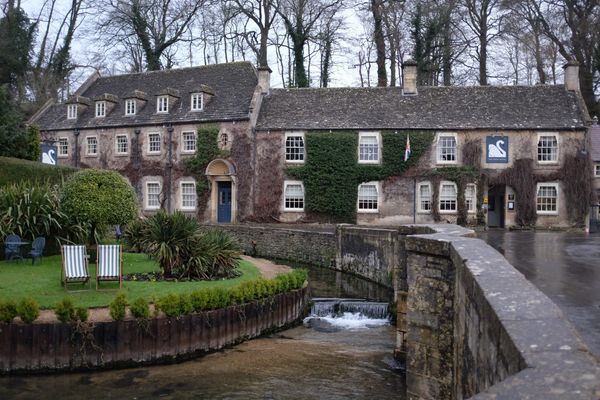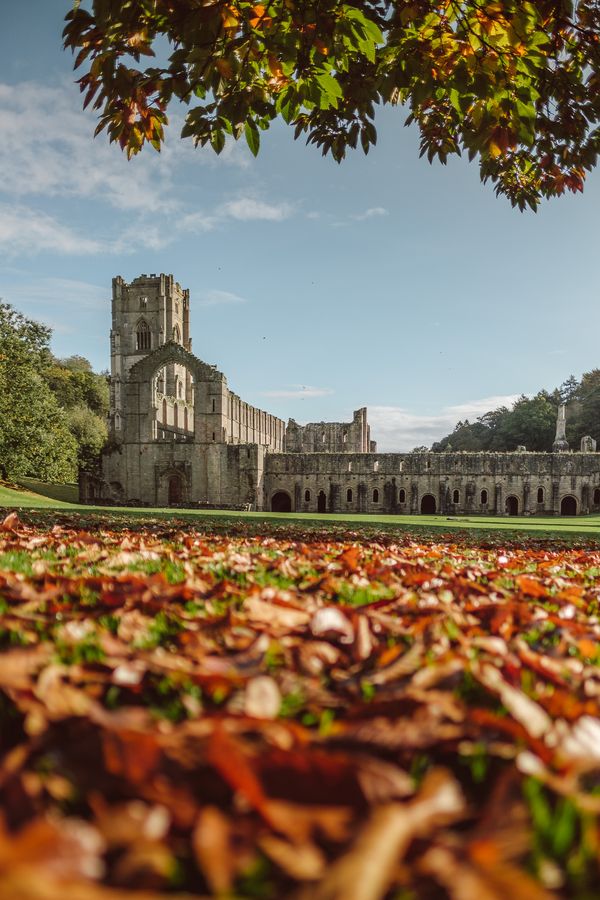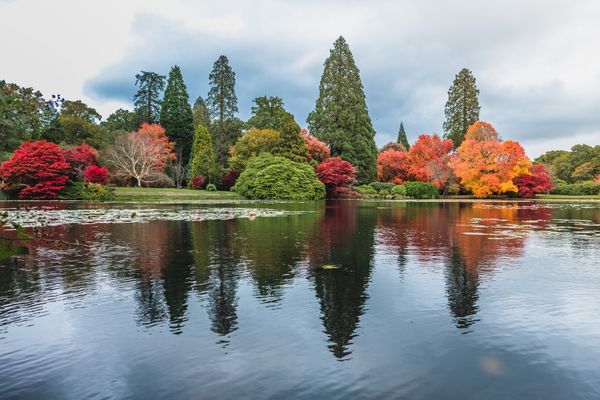We love being National Trust members! Over the past five years, we’ve visited more National Trust owned houses, monuments and areas of land than we can count, each one beautiful and inspiring in their own way. Whether you’re an avid hiker, or just like to stroll until you find the tea room, there’s something for everyone and the National Trust team are dedicated to maintaining each one so that you can enjoy it to the fullest. These places are so much more than just historic properties! Here are some of our faves that are not to be missed in the coming year:
For the gardens
The National Trust are famous for their incredible woodlands and flower displays. Certain seasons are more popular for visiting some properties – for example, visitors flock to Emmetts Garden in Kent every Spring for the arrival of the bluebells. The winding paths on the hillside provide optimum viewing of the blue carpet of flowers, and a gorgeous backdrop for photos with friends. Similarly, the trees at Sheffield Park in Kent are so famous for their autumn display that it’s vital to book entry tickets in advance, as the team are forced to turn away visitors when the Park reaches capacity each year! As with most places where booking is advised, we always recommend choosing the earliest time slot possible to see these places in a quieter setting, before the crowds arrive and you find yourself queueing for the perfect photo spot!
Last Spring we took an impulse trip to Greys Court, Oxfordshire, and it turned out to be one of the most beautiful National Trust gardens we’ve visited! The thoughtfully designed areas take you on a journey for the senses – through a twisted jungle of wisteria, to a courtyard blooming with hyacinths via a small secret-garden style door, and out to a bright walled garden with lemon-filled greenhouses and ginormous magnolia trees. If this sounds like your idea of heaven, the quirky flora at Glendurgan Garden, Cornwall, is another to add to your must-visit list. With its own beach, hedge maze, and unusual valley gardens full of exotic plants there’s something fascinating around every corner!
For the scenery
If you prefer wild landscape to neat gardens, the dramatic cliffs at Lizard Point, Cornwall, offer the perfect location to gaze out to sea and do some dolphin- or seal-spotting. As the most southerly point in England, it’s truly one of a kind. Just fifteen minutes drive away, the tidal beach at Kynance Cove is another lovely spot to visit for its white sand, jagged rock stacks and turquoise waters. Another forty-five minute drive from there will take you to St. Michael’s Mount – one of the most unique National Trust places we’ve visited! Check the tide times before you visit as, in low tide, it’s possible to walk the cobbled causeway to arrive at the island on foot. (During high tide, arrival is via boat!) The island is home to around thirty people who act as caretakers, and has its own medieval church and castle at the crown where visitors are welcome to look around and admire the gardens on the cliff face below. Make sure you book your spot on one of the island’s tours – you’ll learn about its rich history, and some lesser-known secrets of island life.
Enjoying this post? Help support our blog by leaving a tip from as little as £1!
Back on the mainland, in Somerset, Glastonbury Tor rewards visitors for a steep climb with incredible views of the surrounding countryside. The towering structure atop the hill provides shelter on hot or rainy days, and is a calm and spiritual place to sit and rest your feet while admiring the 360 degree views. Beautiful architecture is a staple of a National Trust place, and this is no more true than at Fountains Abbey, North Yorkshire. This UNESCO World Heritage Site is home to one of the largest and best preserved ruined Cistercian monasteries in England, and we spent quite a while here one autumn day admiring the ruins amongst the fallen golden leaves of the season. There are walks around the Studley Royal Georgian water garden, behind the Abbey, where the elegant ornamental lakes, temples and canals provide a series of dramatic vistas for visitors to admire. For those who love to discover hidden gems, Stourhead in Wiltshire is bursting with gorgeous sculptures and buildings, and was once described as a ‘living work of art’ when it first opened in the 1740s! Its landscape garden features a Palladian house and temples inspired by Roman architecture, as well as exotic trees, and mystical grottoes to discover.
For exploring
You may know your way around a National Trust property or its well-manicured gardens, but now it’s time to get out there and really start adventuring! Over in the Brecon Beacons, the National Trust owns and manages the highest point in South Wales – Pen Y Fan. At 886 metres high, visiting this peak is not for the faint hearted (especially if, like us, you commit to the entire 19km horseshoe ridge route!) There is also a short route from the base of the mountain to the top, where the paths are well paved and maintained by the National Trust, who work tirelessly to prevent erosion on the footpaths from heavy visitor footfall and weather damage. If heights aren’t for you, Lydford Gorge in Devon has a moderately challenging circular walk for visitors to admire two waterfalls at either end – the White Lady waterfall is 30 metres high and completely mesmerising to watch. Bring sturdy footwear here – due to the high volume of water, the rocky paths can become slippery and it’s important to take your time.
From flowing waters to the rugged boulders formed by them – a visit to Brimham Rocks in North Yorkshire is truly a window to the past. Most of these strange rock formations have been given animal names due to their shapes provoking the imagination, and if you’re brave enough to climb them, they provide visitors with stunning views of the countryside all around. Created by moving continents and changing weather conditions over 320 million years, it’s mind-boggling to read about the history of this place and try to wrap your head around just how long these rocks have been standing.
If scaling heights, gorges and boulders doesn’t sound like your cup of tea, Devil’s Dyke in West Sussex or Ditchling Beacon in neighbouring East Sussex are both perfect for a gentle stroll, as both their car parks are conveniently located at the summit of the hillside! The former is the deepest, longest and widest ‘dry valley’ in the UK and is quite the sight to behold. The latter is the highest point in East Sussex, with picturesque walks in either direction along the South Downs Way – even on a typical English weather day the views are still very much worth the visit. Our last recommendation on this list is to visit Buttermere Valley, in Cumbria. If you’ve been to the Lake District you’ll know how special this part of the country is, and Buttermere is a shining example of the awe-inspiring landscape that this area is known for. With an easy path to follow around Buttermere lake, you’ll only need around an hour and a half to complete the trail, but trust us – you’ll need to allow extra time to take photos here!
If you found this post helpful, please support our blog by donating as little as £1 to our running costs! Thank-you!

We are Chris+Suze

Thank you for reading!
We hope you’ve enjoyed this post! For more posts about great places to visit, head to our blog or follow us on Instagram and Facebook for photos and videos from our travels! Let us know in the comments – have you visited any of these National Trust places? Or has our post inspired you to go!






